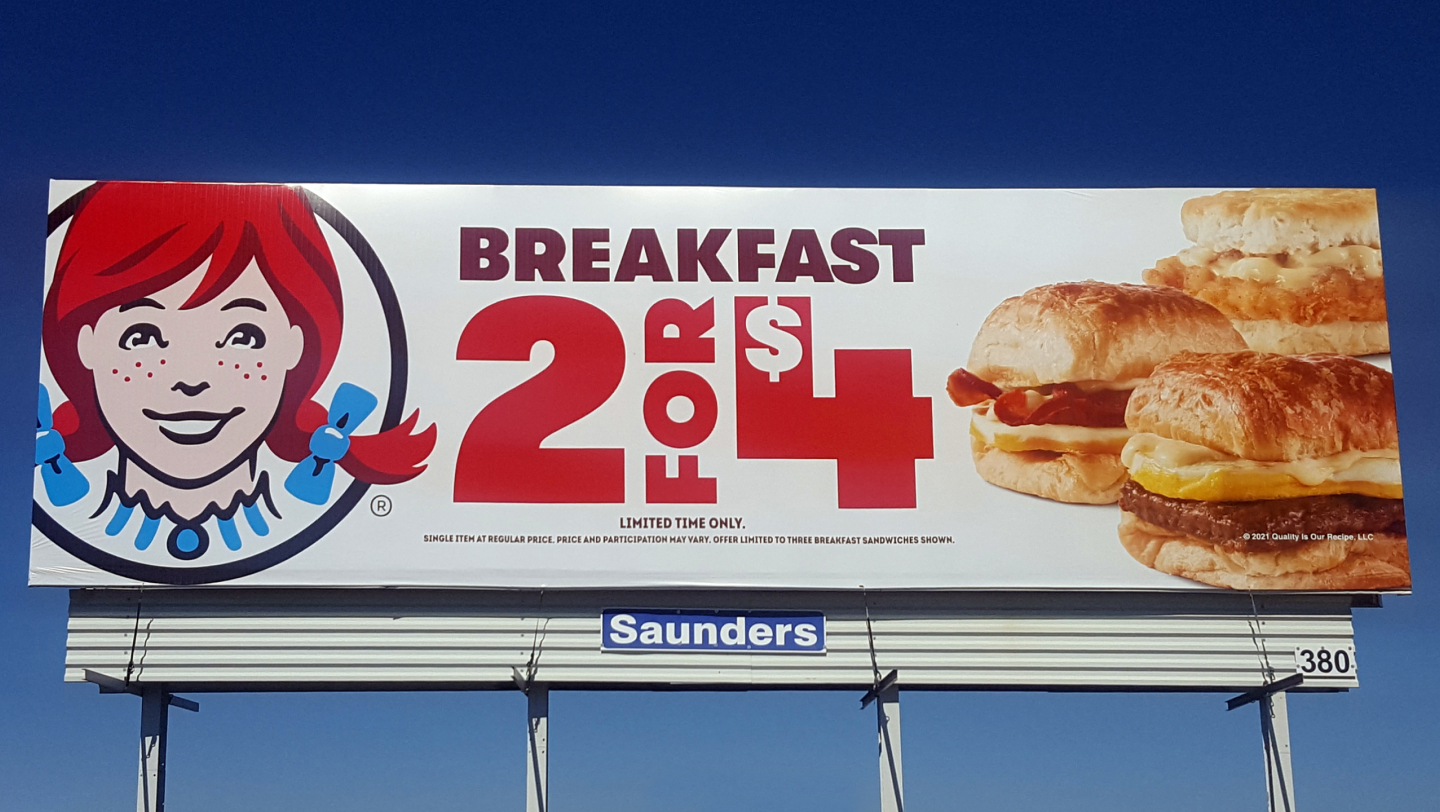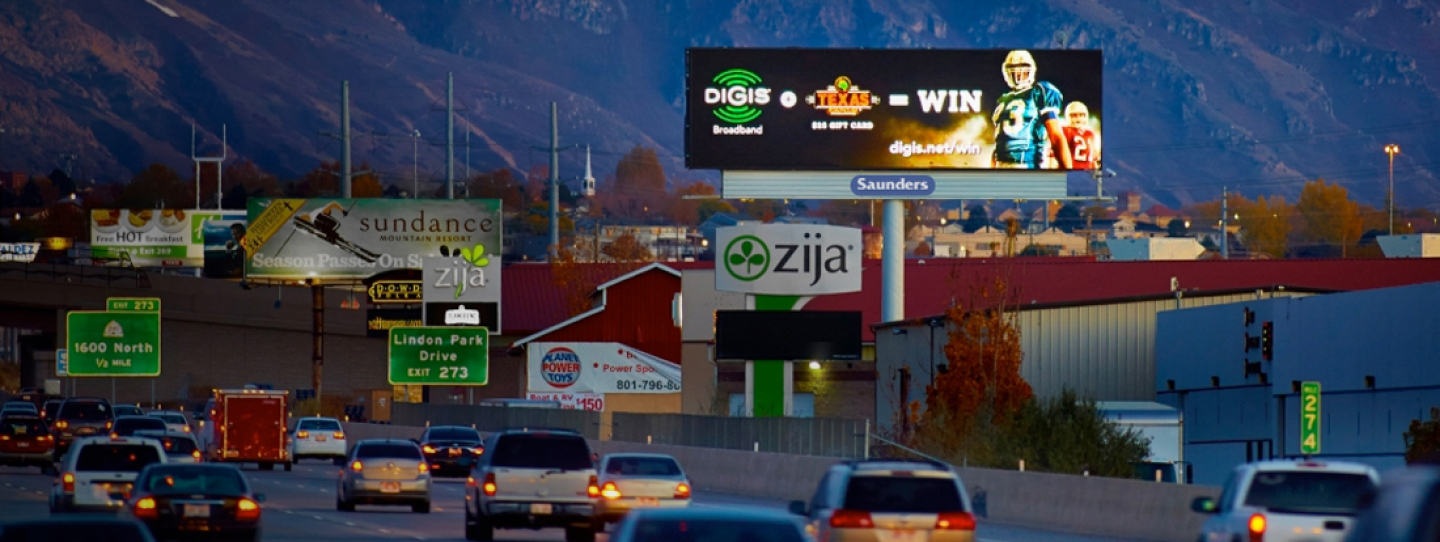
If you’re considering outdoor advertising as part of a marketing plan, you might be wondering how to get a billboard to advertise your business. Billboards can be a very effective advertising tool that provides unique benefits to those advertisers who use them well. Here’s our guide to getting started with outdoor billboards.

For some businesses, it may be best to hire a local advertising agency to help with the steps above. They will often have the background and experience to help guide your decisions.
One of the best things about billboards is that they are suitable for most businesses, so long as they adhere to advertising requirements by the billboard’s owner. However, rather than buying a billboard, interested advertisers lease space on existing billboards owned by outdoor advertising providers. Whether you’re providing information, advertising a product or service or giving directions to your business, a billboard can be a great opportunity to reach people beyond social media, online advertising or other types of traditional advertising.
There are a few things to know about outdoor advertising messages. The billboard industry largely self-regulates itself. For example, in 1999 cigarette brands agreed not to use outdoor ads any longer. Most billboard companies won’t place advertisements for items that might be illegal or overly controversial. Billboard companies generally have a wide latitude to decide which messages to place, and there may be some required local or state regulations.
Fortunately, when leasing a billboard, the outdoor advertising provider can inform you about their own regulations and any local rules. Billboard companies are often concerned with potential negative publicity and legal liabilities. Restrictions may include guns, vulgarity, profanity, nudity or extreme politics.
In the past, billboards were often called painted bulletins, because they were literally painted by hand. Nowadays, billboard companies generally use vinyl wraps to put up a message. Or for smaller billboards, they can sometimes be printed on paper. In the case of digital billboards, artwork is provided as a file and posted to the board electronically.
Generally, the billboard company will have a design team that you can access. Or, as mentioned, you can hire a local advertising agency or a graphic designer experienced in handling outdoor advertisements. Whichever route you go, be sure to listen carefully to their advice.

Billboards come in different sizes, from 12x24 feet to 14x48 feet, so make sure you know the size of the billboard before you start the design. Even though billboards have a lot of surface area, that doesn’t mean you can treat them like other types of advertising. Vehicle occupants have only a few seconds to view an advertisement. You need to both catch their eye and leave them with a memorable, impactful message.
Here are some generally accepted guidelines:
When selecting a location, you can simply drive through a targeted area to see what is available—or you can work directly with local outdoor advertising companies and ask to see their inventory.
When looking for a billboard location, carefully consider your audience and marketing goals. If your goal is to direct people to your business, you may need to place your advertising in specific locations. If your goal is branding, you may have more flexibility in the location.
You may want to choose a location that doesn’t have a lot of competition. You may also want to test your message before committing too much investment—digital billboards are especially good for this. Just realize that the more appealing the location and traffic count, the more expensive the billboard will be.
Truth be told, it can be difficult to accurately determine return on investment (ROI) from a billboard. Billboards are usually measured for effectiveness based on the number of vehicles or pedestrians who pass each day. This number can be helpful when considering your reach on a given billboard, but it does not necessarily determine your (ROI).

To improve your chances of measurable success, consider using a unique phone number*, or website address, which can both provide measurable “hits” on your ad. Another option is a unique website and landing page that will allow you to track ad hits. You may choose to provide a survey for visitors that ask how they heard about you. Some businesses create a measurable code or hashtag. You can also track sales before and after a billboard is published.
*A memorable website address can be easier to remember than a phone number.
Years ago, billboards were thought to be more effective for larger brands, but in today’s marketplace, small and large businesses can also benefit. Billboards are a great way to create brand awareness in your target market. With digital billboards making outdoor advertising more accessible for more businesses, you may even be able to tap into larger markets. Be sure to look carefully at how a billboard can support your other marketing efforts before making a leasing arrangement.
Leasing a billboard is often a process and can take a few weeks to get from design to a live ad. It also can be an investment—so, you’ll want to do all you can to get your money’s worth. If you’re new to outdoor advertising, consider testing one billboard and measuring the realized benefit—then, consider others based on the results.
For most advertisers, billboards do work, especially when well-designed and in a location that effectively reaches your target customers. Saunders Outdoor Advertising has been at this for a long time. Please don’t hesitate to contact us for no-pressure help with your decision-making.